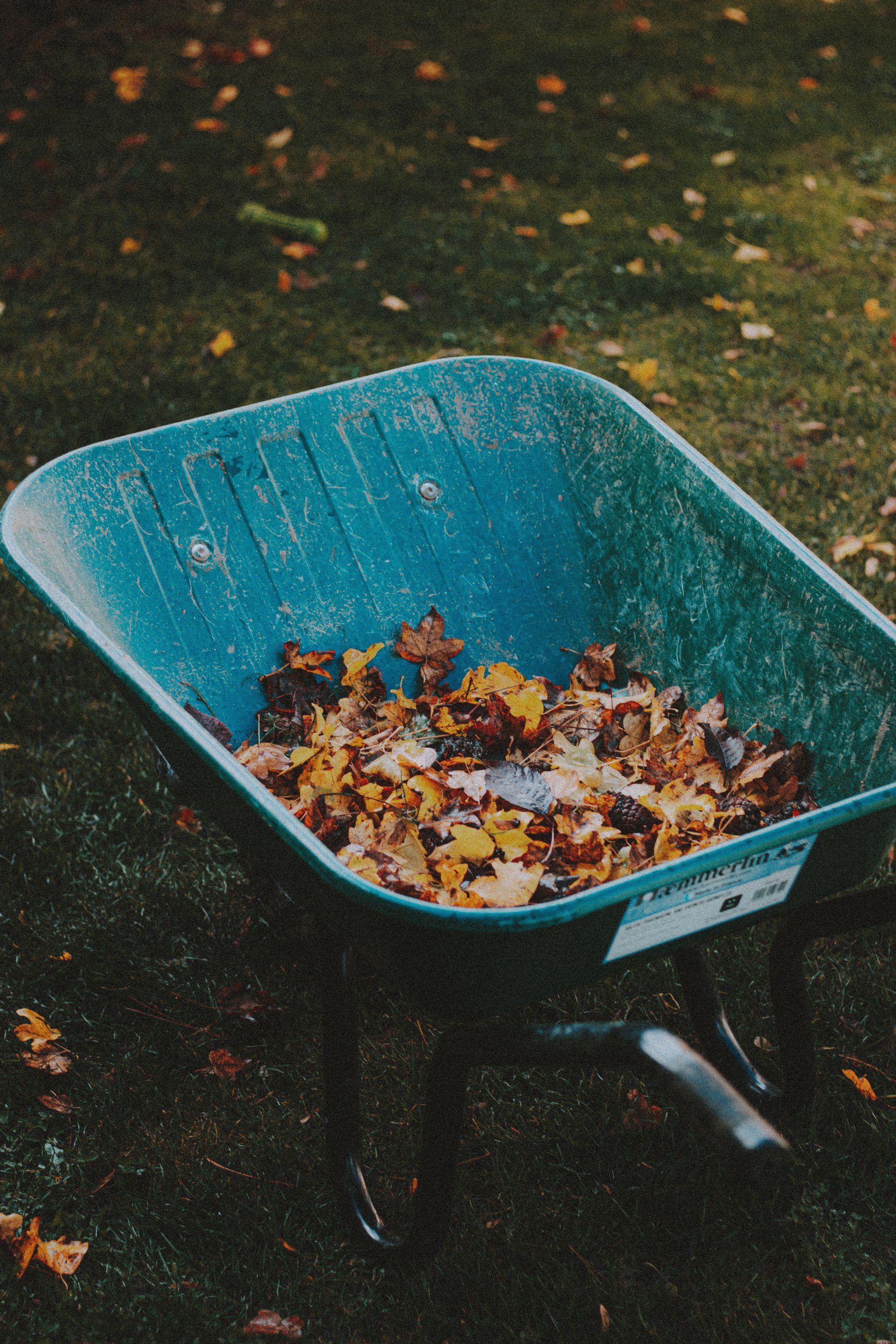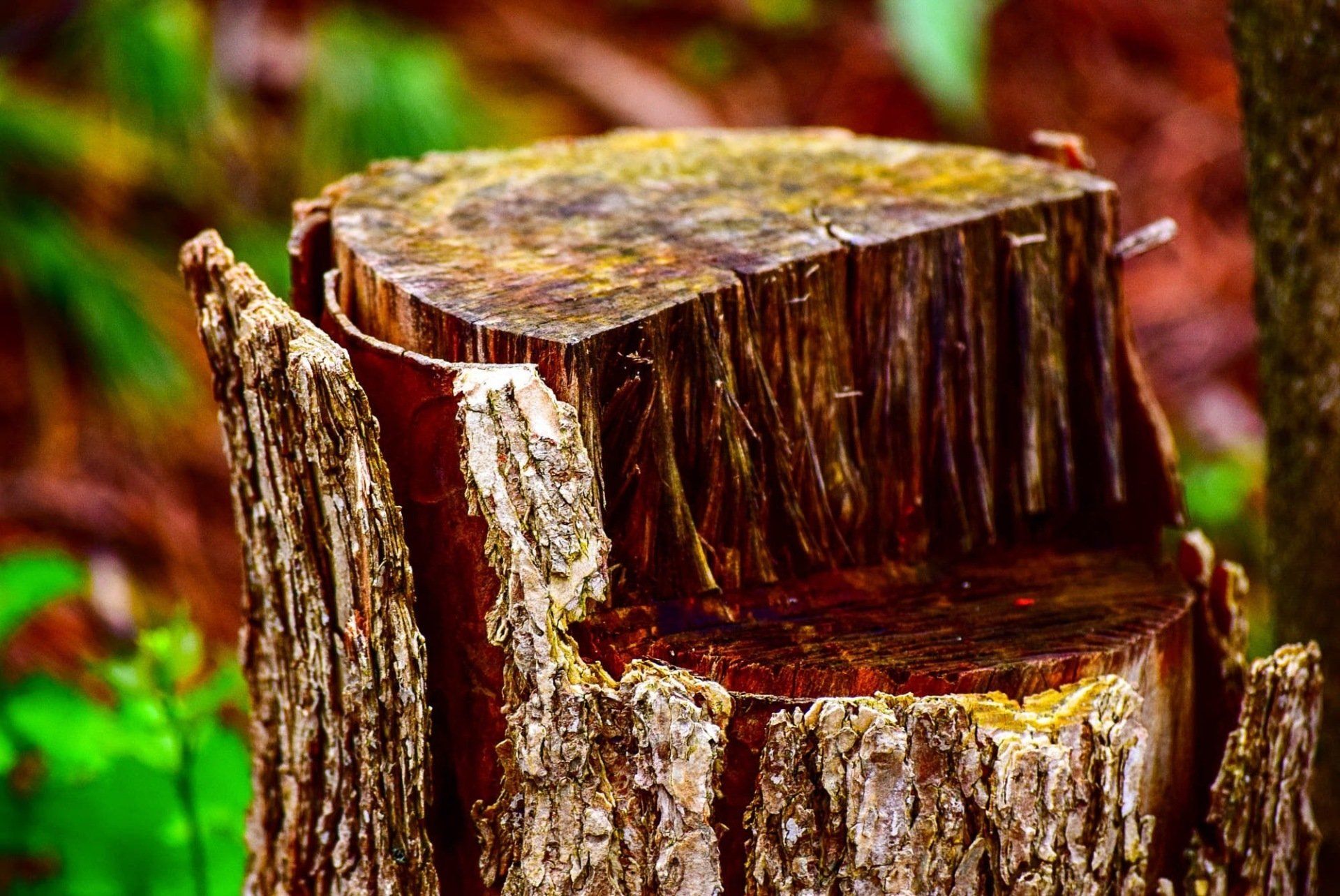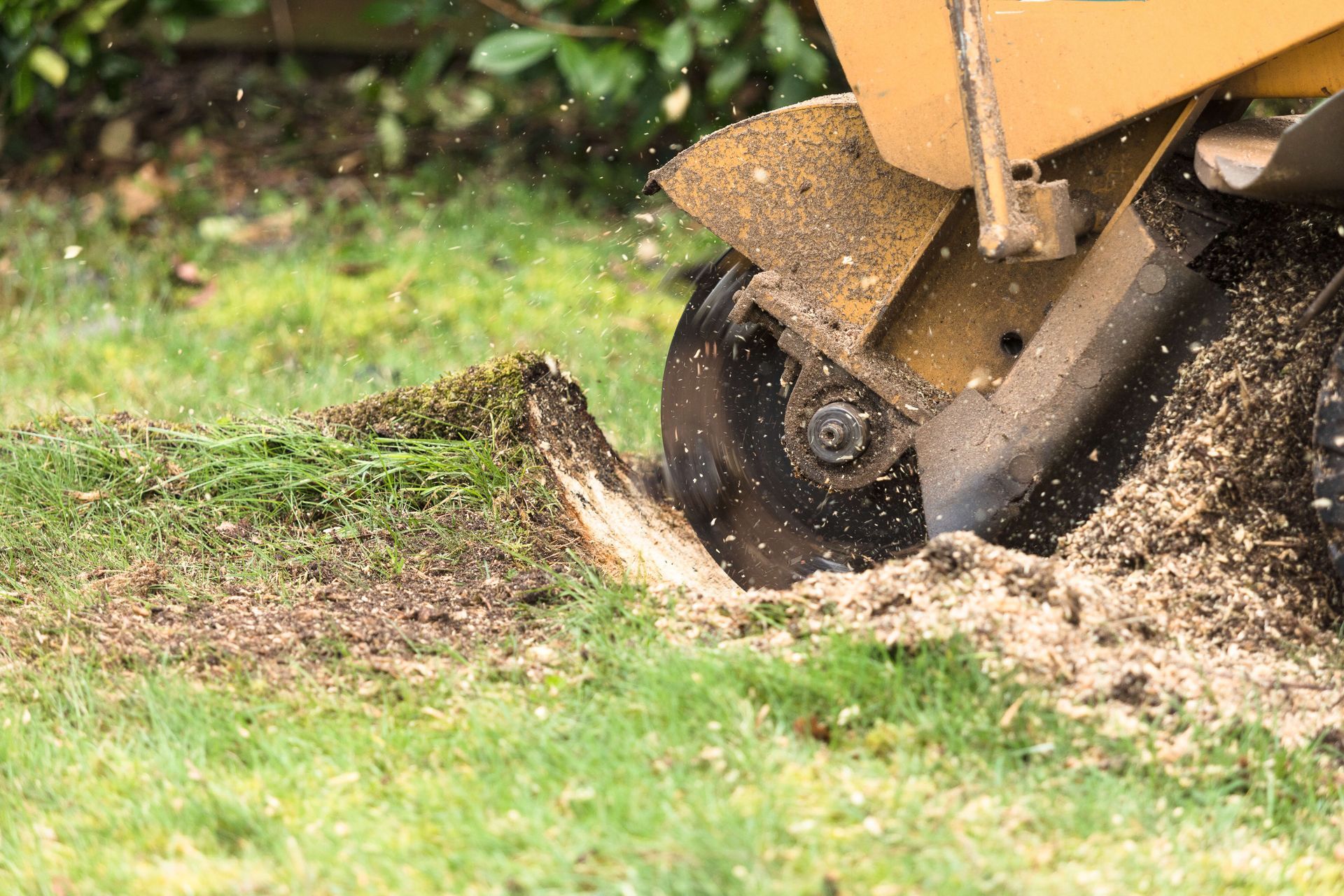How Stump Grinding Can Improve Soil Health and Nutrient Cycling
Stump grinding is a vital process in land management, crucial for enhancing soil health and nutrient cycling. Soil health, defined by its ability to sustain plant and animal productivity, is directly linked to nutrient cycling, where essential elements are circulated through living organisms, soil, water, and air. Stumps can hinder these processes, obstructing nutrient flow and impeding plant growth. This is where stump grinding steps in.
At McGrath Stump Removal, we prioritize sustainable land management practices, including stump grinding, to mitigate the negative impacts of leftover tree stumps. Our efficient stump grinding process involves the mechanical shredding of stumps into mulch-like material, effectively removing obstacles to soil health and nutrient cycling. By breaking stumps into organic matter, we accelerate decomposition and release trapped nutrients into the soil, promoting healthier plant growth and overall ecosystem vitality.
In this blog, you will gain insights into the various benefits of stump grinding for soil health and nutrient cycling. From understanding the detrimental effects of stumps on soil to exploring the environmental considerations and practical applications of stump grinding, this blog aims to provide a comprehensive understanding of how this process can significantly improve soil health and nutrient cycling. At the end of this blog, you will be equipped with knowledge and recommendations to implement stump grinding effectively, fostering healthier ecosystems and sustainable land management practices.
Let’s get started!
How Stump Grinding Improves Soil Health
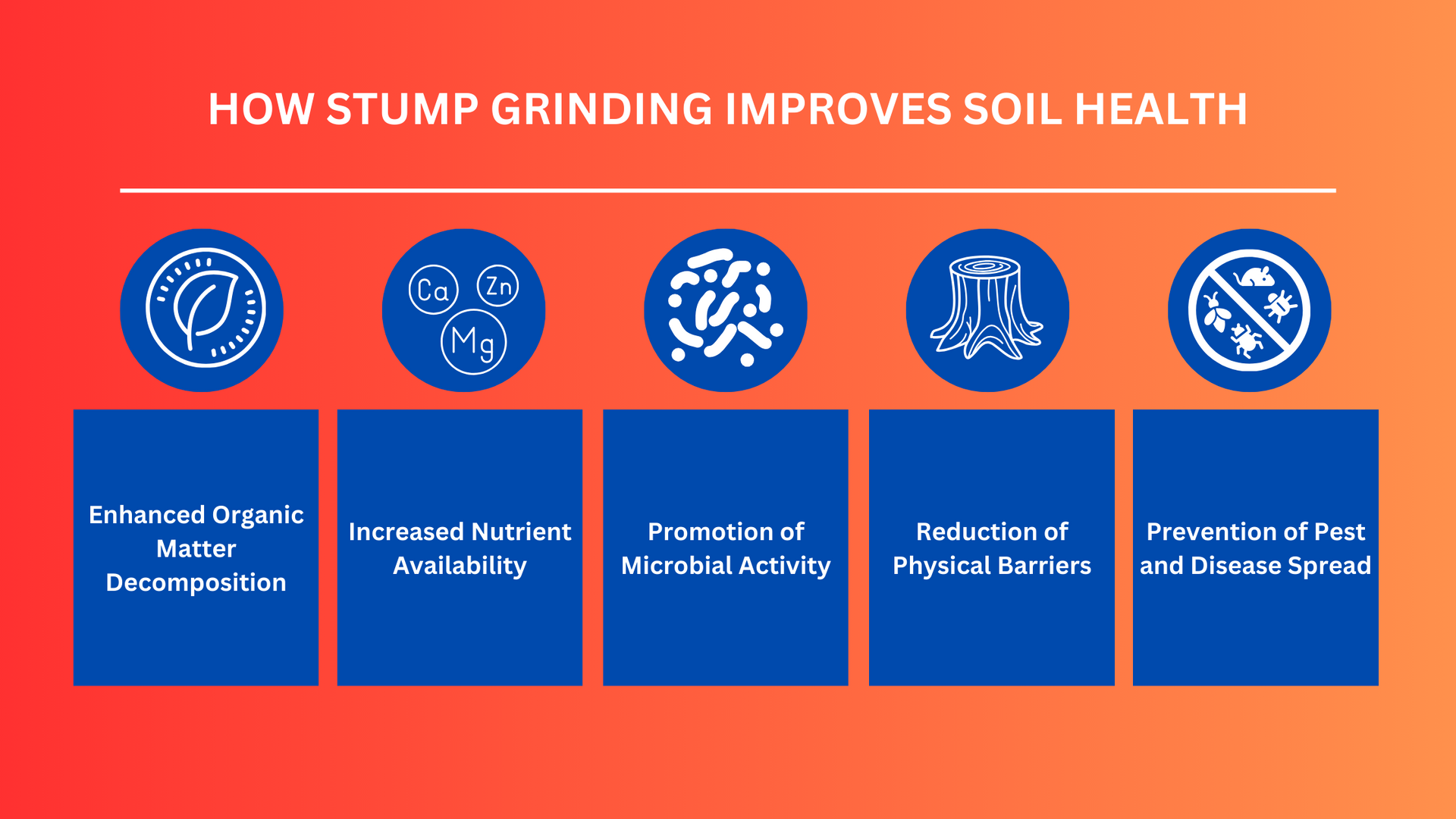
Stump grinding is an effective technique for enhancing soil health and promoting ecosystem nutrient cycling. Unlike leaving stumps to decay naturally or using chemical treatments, stump grinding offers a sustainable solution that actively contributes to soil improvement.
Here are five key ways stump grinding improves soil health:
Enhanced Organic Matter Decomposition
When trees are cut down, their stumps often remain in the soil, gradually decomposing over the years. However, this natural decomposition process can be slow, especially for more giant stumps. Stump grinding mechanically shreds these stumps into more minor wood chips, significantly increasing the surface area available for microbial activity. As a result, microorganisms can more efficiently break down the organic matter, releasing nutrients into the soil.
Increased Nutrient Availability
Stumps contain significant amounts of carbon, nitrogen, and other essential nutrients. Through stump grinding, these nutrients are liberated from the woody material and become more readily available for uptake by surrounding plants. This influx of nutrients can stimulate plant growth and improve overall soil fertility. Additionally, the breakdown of lignin and cellulose in the stump material releases carbon, enriching the soil's organic carbon content, which is crucial for soil structure and water retention.
Promotion of Microbial Activity
Soil microorganisms is vital in nutrient cycling, decomposition, and soil health. Stump grinding provides a nutrient-rich substrate for microbial colonization and activity. As microbes break down the woody debris, they release enzymes that further accelerate decomposition and mineralization. This microbial activity contributes to the formation of humus, a stable form of organic matter that improves soil structure, water retention, and nutrient availability over the long term.
Reduction of Physical Barriers
Stumps left in the soil can create physical barriers that impede root growth and water infiltration. Over time, these barriers may hinder the establishment and growth of new vegetation, leading to degraded soil health. Stump grinding stumps below ground level eliminate these physical obstacles, allowing roots to penetrate deeper into the soil and access water and nutrients more effectively. This facilitates the establishment of healthier vegetation and promotes overall ecosystem resilience.
Prevention of Pest and Disease Spread
Decaying stumps can serve as breeding grounds for pests and pathogens, posing risks to nearby vegetation. Insects such as termites and beetles may inhabit decaying stumps, potentially spreading to healthy trees and causing damage. Similarly, fungal pathogens associated with decaying wood can infect nearby plants, leading to disease outbreaks. Stump grinding removes these potential sources of pest and disease infestation, contributing to the overall health and vitality of the ecosystem.
Benefits of Stump Grinding for Nutrient Cycling
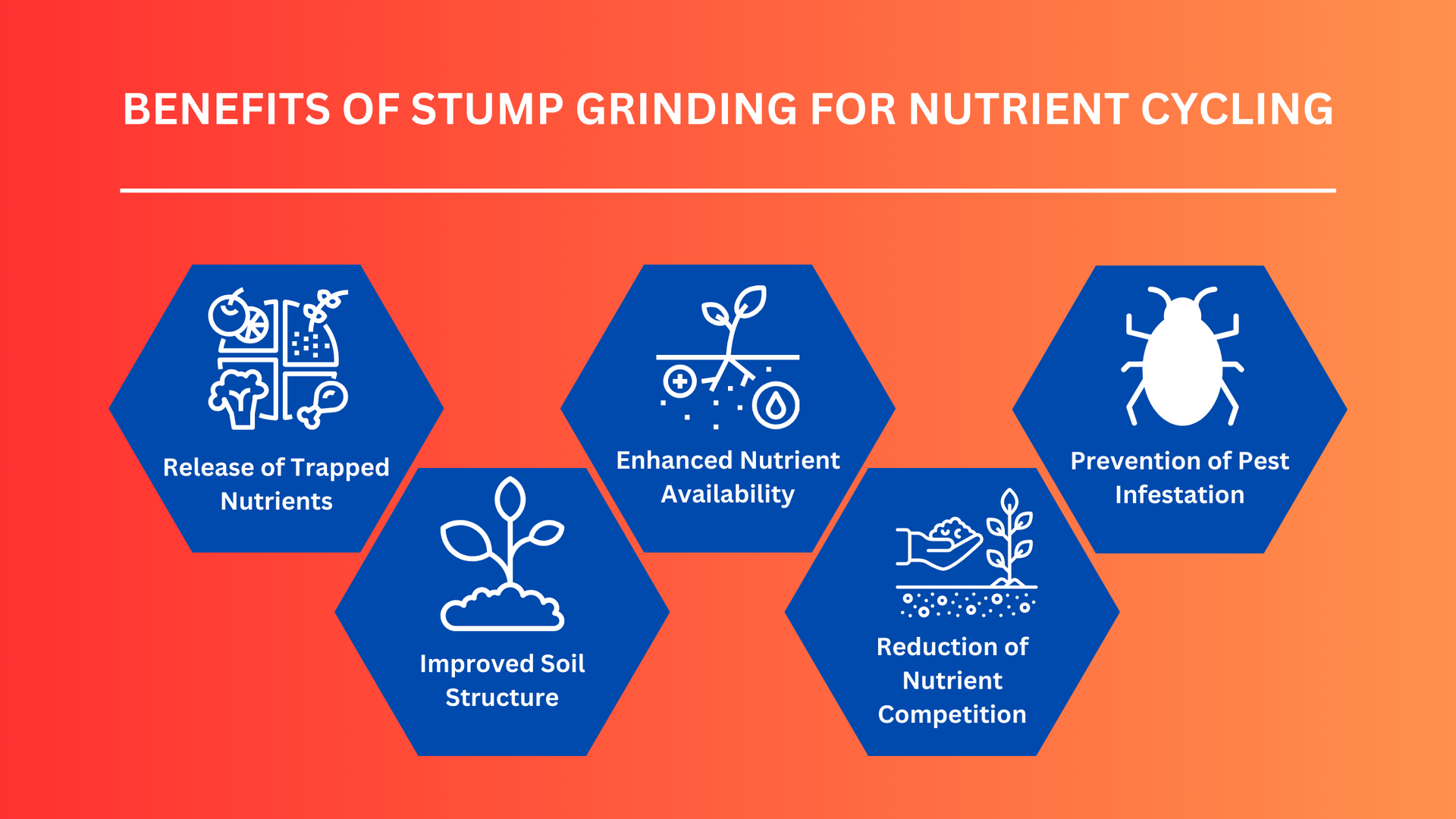
Stump grinding, a method employed to remove tree stumps from the ground, offers many benefits for nutrient cycling in soil. By breaking down the stump material into organic matter, stump grinding enhances nutrient availability, promotes microbial activity, and facilitates the release of trapped nutrients.
Let's delve into five key benefits of stump grinding for nutrient cycling:
Release of Trapped Nutrients
Stumps left in the ground can act as reservoirs for essential nutrients, preventing them from cycling back into the soil. Over time, as stumps decompose naturally, these nutrients remain locked away. However, stump grinding accelerates this decomposition process, effectively releasing trapped nutrients such as nitrogen, phosphorus, and potassium back into the soil, where they can be utilized by surrounding vegetation. This process enriches the soil and promotes healthier plant growth.
Enhanced Nutrient Availability
As stumps are ground into smaller particles, the surface area available for microbial activity increases. This heightened microbial activity leads to faster decomposition of organic matter, releasing nutrients stored within the stump. Additionally, the finer texture of the ground stump material allows for more straightforward incorporation into the soil, ensuring a more even distribution of nutrients throughout the root zone of nearby plants. Consequently, the soil becomes more nutrient-rich, providing essential elements for plant growth and vitality.
Prevention of Pest Infestation
Left untreated, sumps can attract pests such as termites and wood-boring insects, which can cause further damage to surrounding vegetation. Stump grinding eliminates these potential habitats for pests, reducing the risk of infestation and minimizing the need for chemical pest control measures.
Improved Soil Structure
In addition to nutrient cycling, stump grinding enhances soil structure, benefiting nutrient availability. Incorporating ground stump material into the soil improves soil aeration, drainage, and water retention. This enhanced soil structure creates favorable root growth and proliferation conditions, allowing plants to access nutrients more efficiently. Moreover, improved soil structure mitigates compaction issues, which can hinder nutrient uptake and root development. Combining stump grinding and soil improvement measures ultimately contributes to a healthier and more productive growing environment.
Reduction of Nutrient Competition
When stumps remain in the soil, they compete with surrounding vegetation for nutrients. This competition can limit the availability of essential elements for plant growth, resulting in stunted growth and decreased productivity. Removing stumps through grinding alleviates nutrient competition, allowing plants to access nutrients without interference. As a result, vegetation can thrive without being hindered by residual stumps, leading to improved crop yields and overall ecosystem health.
Key Takeaway
Stump grinding significantly benefits soil health by accelerating nutrient cycling and promoting microbial activity. Breaking down stumps into organic matter releases trapped nutrients, enhancing nutrient availability for plants and fostering healthier soil ecosystems. It's a sustainable land management practice that improves soil structure and facilitates better plant growth.
Consider stump grinding for land restoration projects or landscape management plans to harness these benefits. By incorporating stump grinding into your practices, you contribute to the long-term health of your soil and ecosystem. Take action today to explore stump grinding services in your area and start reaping the rewards of healthier soil for your landscape. Contact us now to learn how stump grinding can transform your land management approach.

